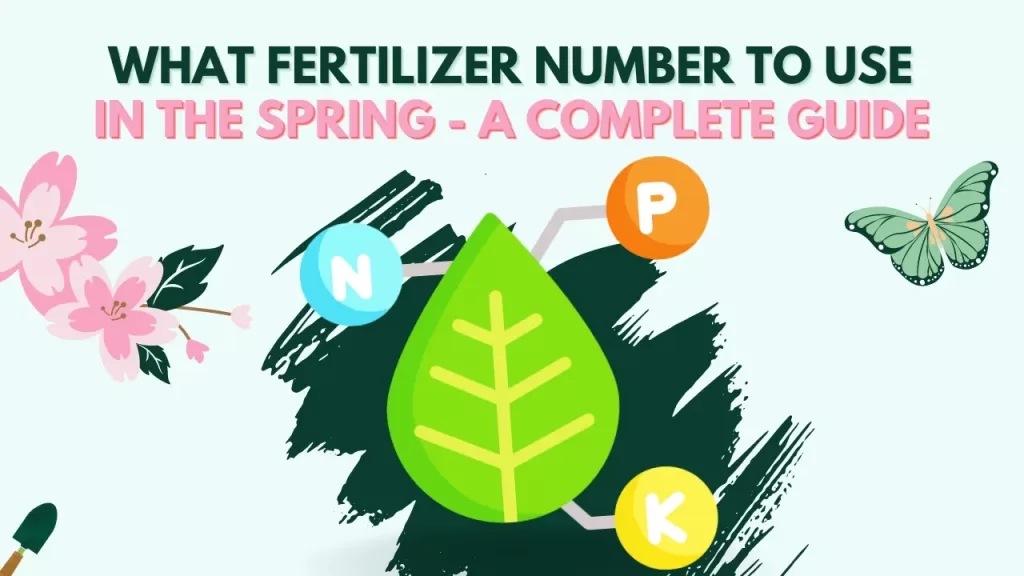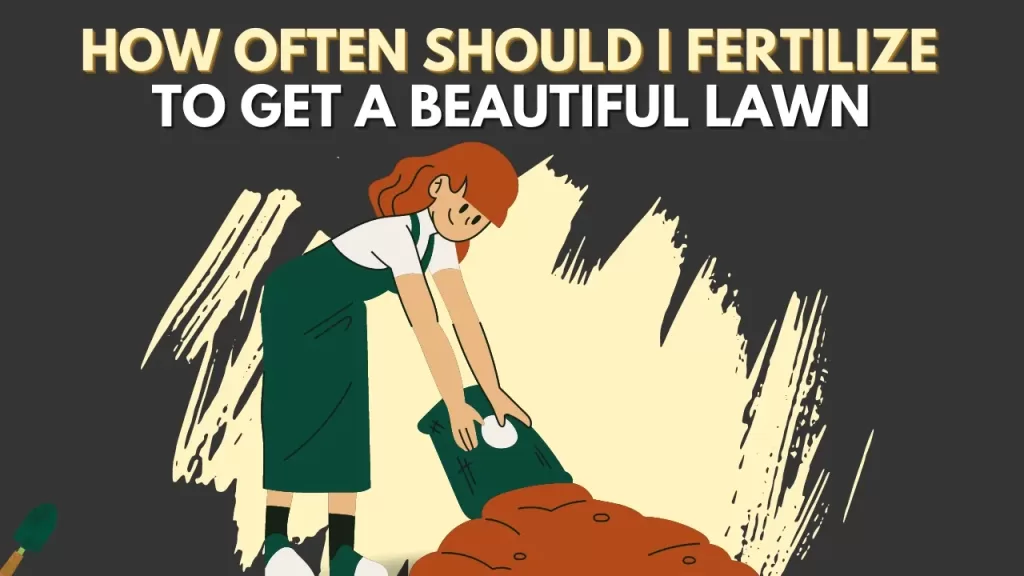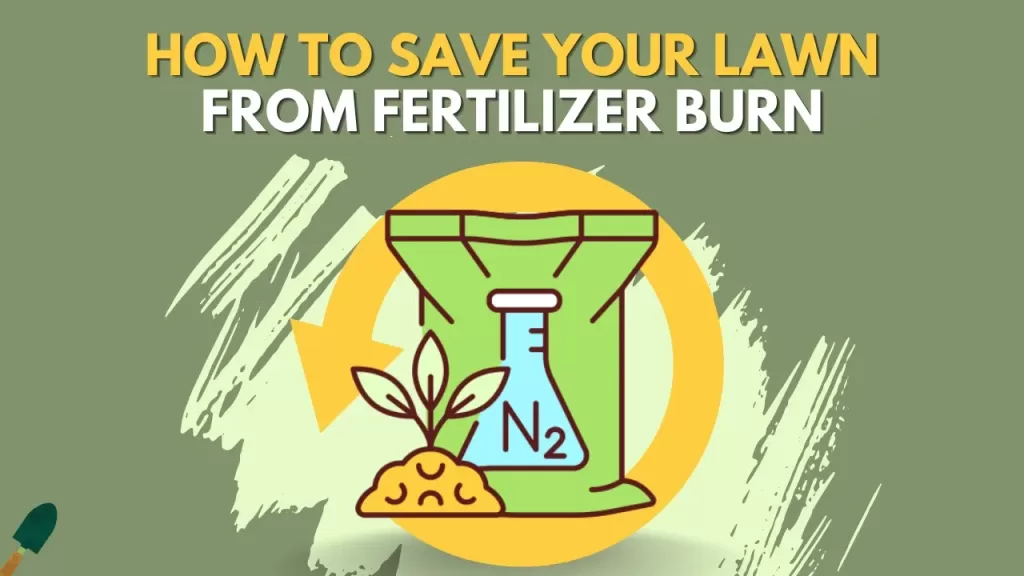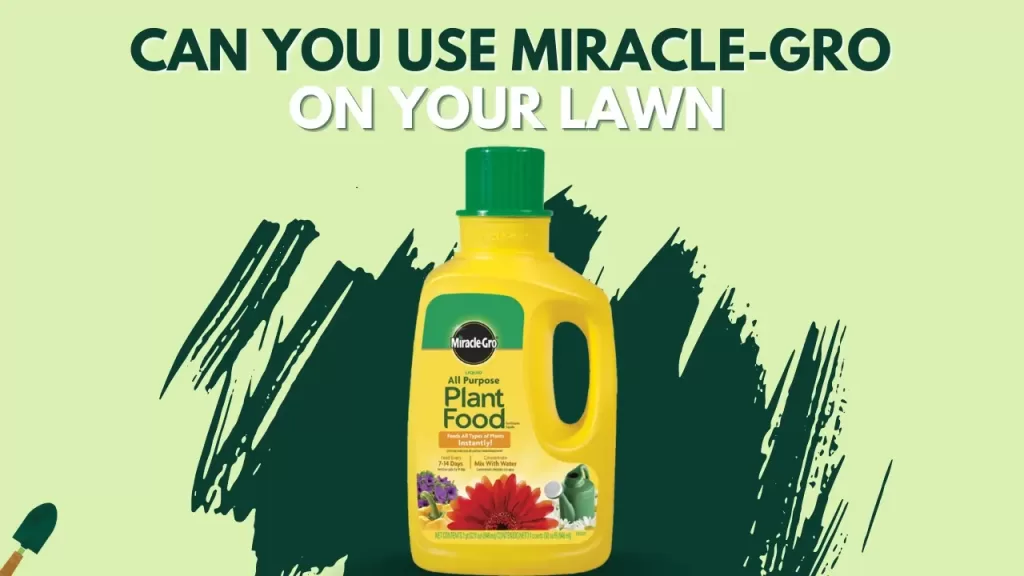Fertilizing the lawn is one of the most crucial parts of lawn maintenance and also one of the crucial parts in spring when the lawn is coming out of the dormancy and stress of the winter frost. So what fertilizer number to use in spring to get a healthy and thick lawn?
The best fertilizer number to use in spring for your lawn will be 30-0-4. This is the perfect mix of all the nutrients the lawn needs when it is recovering from dormancy and trying to go from brown to green, keeping the nitrogen higher and a little bit of potassium to boost the process.
Now you know what fertilizer number to use but it’s not that simple. So let’s understand why this number is used and what is the best way to fertilize your lawn.

What are these numbers on fertilizer?
The numbers you see on fertilizer is to help you determine what type of fertilizer you need for your lawn. These numbers indicate the percentage of certain nutrients available in the pack which is crucial for the growth of the grass. These numbers indicate the percentage or ratio of NPK in the bag. So what does NPK mean?
What does NPK mean?
The NPK expands for Nitrogen, Phosphorus, and Potassium, where N stands for Nitrogen, P stands for Phosphorus and K stands for Potassium as these abbreviations are the chemical notations of these elements.
- Nitrogen – Nitrogen (N) helps the plant to grow. It is the most important nutrient a plant needs to produce food as nitrogen aids in the creation of chlorophyll, which then creates the green pigment in the grass to absorb sunlight and produce sugar and carbon dioxide. This is the reason you will find fertilizers with a high percentage of nitrogen in them to give the lawn a good start and support it from stress. An application of nitrogen in the spring and then an application of slow-release fertilizer every 3 months makes your lawn healthy and strong to face drought and heat.
- Phosphorus – Phosphorus (P) is also very important to the grass as it helps the root system by making it strong and grows and establish in the soil. If there is a drought or disease in the lawn these roots will need to be strong enough to withstand it and phosphorus helps the plant to transfer energy throughout the plant and allows the plant to grow efficiently.
- Potassium – Potassium (K) is what is important for the overall health of the plant. Potassium helps the plant cells to do photosynthesis, helps in absorbing the water, respiration, and protein production. Helping in all these things makes potassium a very important nutrient. It makes the plant resistant to drought, diseases, and cold hardiness. A deficiency of potassium can weaken the plant and make it vulnerable to drought and diseases.
Where to find the NPK number on the fertilizer?
Finding the NPK numbers on fertilizers is fairly easy as it is written on the front of the pack or sometimes associated with the name just like “Pennington Ultragreen Weed And Feed 30-0-4”. So finding the NPK number on the pack will not be a problem for anyone. If by any chance it is not mentioned on the front of the pack or associated with the name, it will surely be written on the label on the back with the recommendation guide on how to use it on the lawn.
What Fertilizer number to use in spring?
So as you now know what these numbers stand for and what type of food they provide, let’s discuss what type of fertilizer number you should use in your lawn in spring to get a perfect and healthy lawn.
The best fertilizer number for spring is where the nitrogen is in higher percentages as it will give the grass the food it needs to become greener but there is no need for a lot of phosphorous as the lawn is recovering from the dormancy and it already has good root system from the fall but it can take a little help from potassium to grow faster by boosting the process.
The best fertilizer number will be 30-0-4 for the lawn feeding in spring. You can use Pennington Ultragreen Weed And Feed 30-0-4 as this will be the best fertilizer to start your lawn season.
But sometimes the condition of the lawn is different and therefore maybe it needs a different number of fertilizers. Let’s take a look at what is the best fertilizer number for different types of lawns in spring.
- New lawn – so if you are starting a new lawn, it needs a lot of food to germinate and grow in the lawn and for that, it needs nitrogen which will help the grass to produce chlorophyll and produce food for growth. The best fertilizer number for a new lawn would be 30-0-4 or another number where nitrogen is high and a little potassium to boost the process.
- Established lawn – if you have a lawn that is just coming out of dormancy and starting to recover, it is the same as starting a new lawn as it just needs a little help to produce food and go from brown to green by creating chlorophyll. The best fertilizer number for this lawn would be the same as a new lawn where nitrogen is high and a little bit of potassium like 30-0-4.
- Poor lawn – if you are seeing your lawn on the brink and want to revive it then you need a different fertilizer number. The best fertilizer number for this lawn is 22-23-4. The combination of nitrogen and phosphorus would help the lawn to generate food as well as establish the roots and small amounts of potassium to boost the process. You can use Pennington Ultragreen Starter Fertilizer 22-23-4 as this will help the lawn to come up from poor condition. You can check out this fertilizer at amazon here.
When to fertilize the lawn in spring?
The best time to fertilize the lawn in the spring is one to two weeks after the last frost when the lawn is starting to come back to life. If you fertilize it too early the lawn can get stressed and won’t be able to absorb the fertilizer. So give it some time after the last frost and when you see the lawn is starting to grow back, that is the best time to fertilize the lawn in spring.
How to fertilize the lawn in spring?
Fertilizing the lawn in the spring is very simple and you can do it by yourself. Let’s look at how to do it step-by-step:
- Make the soil moist – Water the lawn a day or two before you want to put the fertilizer so that the soil is moist and not completely dry as fertilizer can easily burn the grass.
- Check the label – Read the label of the fertilizer you are using and see how much fertilizer you need to apply to your lawn and divide the quantity in two parts.
- Apply the fertilizer – Take the first part of the fertilizer and apply it two the lawn with the help of a spreader or any other method you prefer. After this take the second part of the fertilizer and apply it to the lawn in a different direction. For example, first, apply it horizontally and then vertically, so that the fertilizer is spread evenly in the lawn and you don’t over-fertilize or under-fertilize a particular area.
- Watering – After you have fertilized the lawn, water the lawn thoroughly so that the soil can absorb all the fertilizer and then give it to the grassroots.




